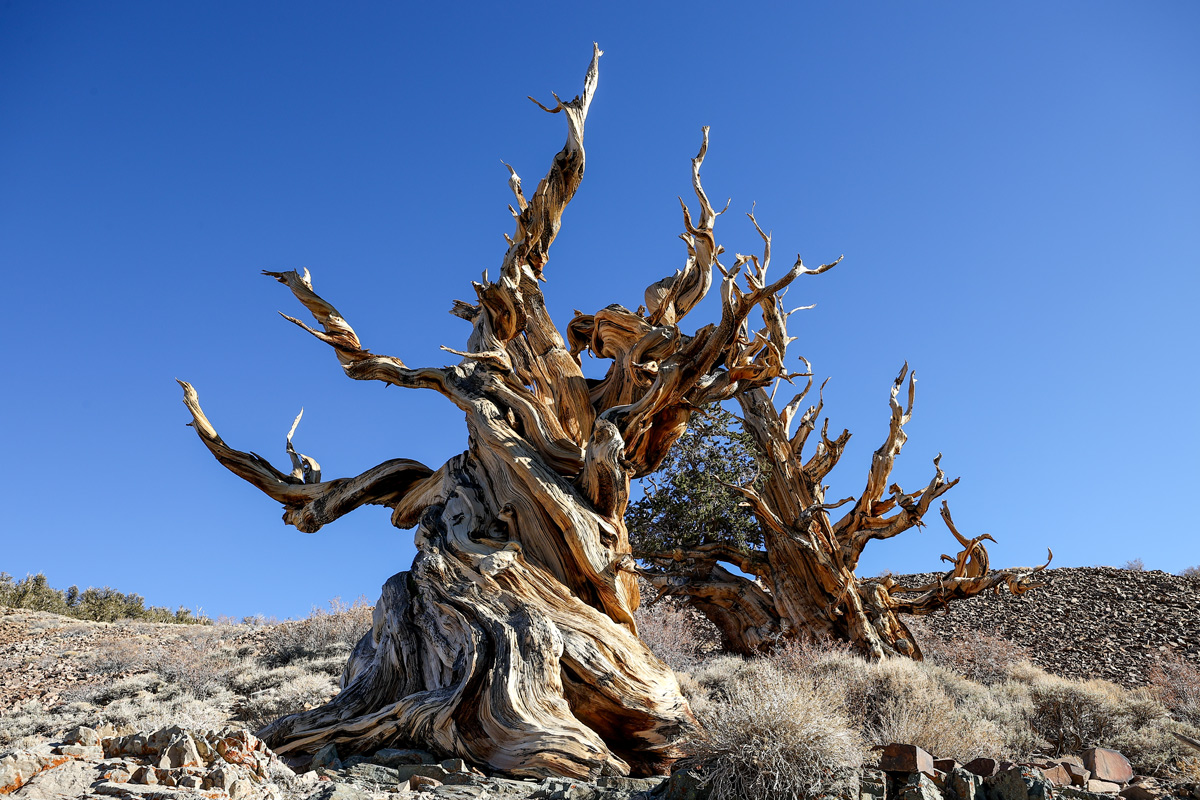The oldest tree in the world is in the Great Basin, deep in California’s White Mountains, a Bristlecone pine (Pinus longaeva), often referred to as Methuselah. Imagine a living being that has stood through the rise and fall of empires, weathered countless storms, and survived for over 5,000 years. Recently spotlighted in a viral post on X on May 18, 2025, this ancient tree continues to captivate both scientists and nature lovers. Let’s dive into what makes this tree so extraordinary.
A Timeless Survivor: The Story of Methuselah
Tucked away in the Methuselah Grove within Inyo National Forest, Methuselah is believed to be around 4,856 years old as of 2025. That means it started growing around 2831 BC, well before the pyramids were built in Egypt.
While Methuselah holds the official title for the oldest non-clonal tree, another bristlecone pine found in 2012 may be even older, estimated at over 5,060 years.
These trees thrive at elevations between 9,500 and 9,800 feet, in an area so remote that Methuselah’s exact location remains undisclosed to protect it from harm.
Their twisted trunks and weather-beaten limbs tell stories of thousands of years surviving in some of Earth’s harshest conditions.
What Makes Bristlecone Pines So Long-Lived?
The secret to the bristlecone pine’s extreme longevity lies in its adaptability. These ancient trees grow in rocky, dolomite-rich soils that are low in nutrients, conditions that discourage competing vegetation.
Their wood is dense and filled with resin, making it highly resistant to insects, fungi, and decay.
Unlike faster-growing trees, bristlecones take their time adding mere millimeters of growth per year. This slow pace helps preserve their structure.
ALSO READ: Tragic Bombing at Palm Springs Fertility Clinic Sparks FBI Investigation.
Their resilience is a natural masterpiece of evolution, allowing them to endure relentless winds, freezing temperatures, and prolonged droughts.
The Oldest Tree In The World: Bristlecone Pines vs. Clonal Giants
While Methuselah holds the crown for the oldest individual tree, clonal organisms like the Pando aspen grove in Utah tell a different story.
Pando’s root system is estimated to be around 16,000 years old, but the trees you see above ground are constantly regenerating.
Other contenders include Old Tjikko, a 9,500-year-old Norway spruce in Sweden. However, these clonal colonies don’t retain the same trunk or branches for millennia. That’s what makes Methuselah—and other ancient bristlecones—so remarkable: they’re single, enduring organisms.
Why These Ancient Trees Still Matter Today
Beyond their astonishing age, bristlecone pines offer vital data for understanding our planet’s climate history. Their growth rings serve as a 5,000-year archive of temperature shifts, precipitation patterns, and environmental changes.
Unfortunately, climate change poses new threats. Rising temperatures and shifting weather patterns could affect the fragile alpine ecosystems these trees depend. Researchers in the southern Rockies have already seen shifts in growth patterns over the past few decades.
Experience the Ancient Bristlecone Pine Forest Yourself
Are you curious to witness this ancient natural wonder? The Ancient Bristlecone Pine Forest in California is open to visitors, with scenic hiking trails that wind through the Methuselah Grove.
While the exact tree isn’t labeled to protect it, walking among these living relics is a humbling experience.
Thanks to a viral image shared on X, more people are discovering these living testaments to time. Search “oldest tree in the world” to explore more, and consider planning a trip to see these natural marvels firsthand.

